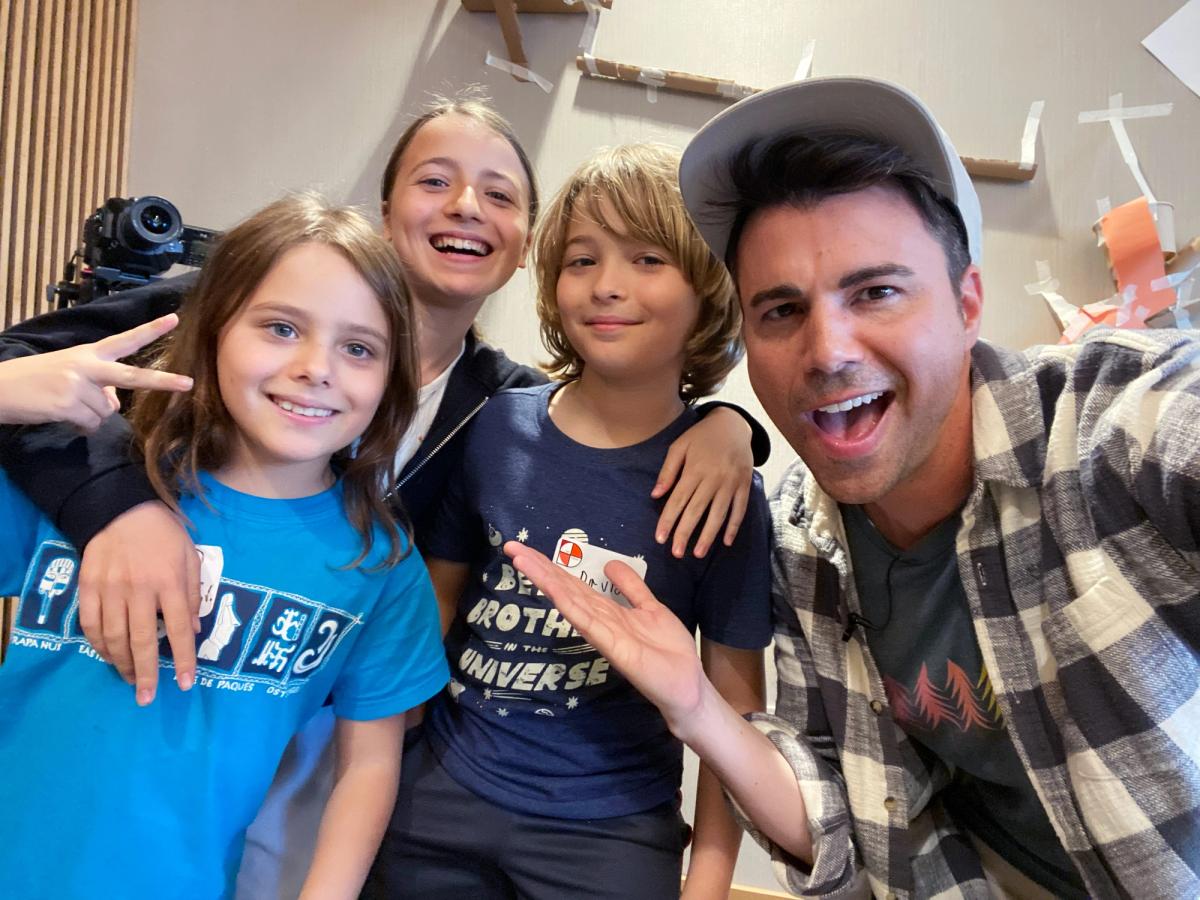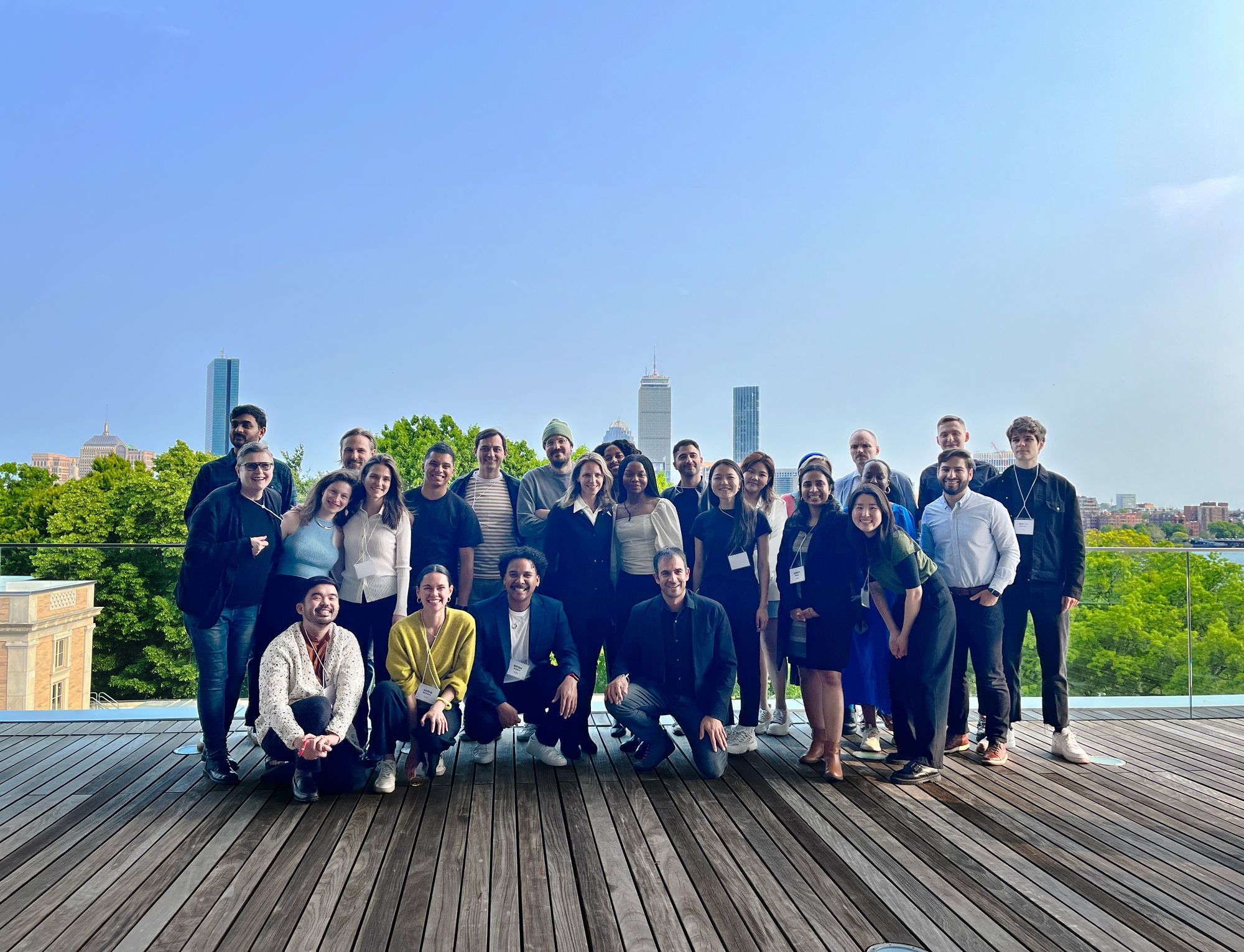Mark Rober Sparks “Playful Anarchy” in the MIT Design Community
MIT MAD recently hosted Commencement Speaker Mark Rober — engineer, educator, and YouTuber —, bringing his infectious energy and enthusiasm to the campus. Throughout his visit, Mark engaged with students, researchers, and young minds, exploring various labs and makerspaces. These interactions epitomized the MAD ethos of celebrating a culture of design and making at MIT.
By Adelaide Zollinger
Jun 13, 2023

On May 31, 2023, the MIT Morningside Academy for Design (MAD) hosted Commencement Speaker Mark Rober, an inspiring engineer, educator, YouTuber, and inventor. John Ochsendorf, MAD’s founding director, accompanied him on a tour of some of MIT’s labs and makerspaces, where Mark engaged with students, researchers, and young minds from the MIT community, showcasing his passion for design and engineering.
The visit kicked off with a stroll through “Maker Alley,” where Mark explored the creations of students from Professor David Wallace’s “2.00b Toy Product Design” class. He got hands-on with their prototypes, appreciating students’ ingenuity and craftsmanship while launching modular airplanes, connecting magnet blocks, or destroying towers with projectiles. The “Toy Product Design” class introduces small teams of 5-6 students to the product design process, with a focus on designing and prototyping new toys for play and entertainment. Students are introduced to various design topics, including: brainstorming; estimation; sketching; graphic design; drawing and marker rendering; sketch modeling; concept development; design aesthetics; prototyping; and written, visual, and oral communication.
Mark then stopped by the Glass Lab, a space where students learn the ancient art and craft of glassblowing. The lab offers beginning, intermediate, and advanced glassblowing classes, and is well-known for its iconic yearly “MIT Great Glass Pumpkin Patch.” In the lab, Peter Houk, the artistic director, challenged Mark to a “Prince Rupert’s drop” experiment.
It involves dropping molten glass into cold water, creating a unique structure with extreme internal stresses that result in a robust bulbous head and a delicate, explosive tail. It demonstrates the principle of tempered glass, a material that is highly durable and fracture-resistant. Mark attempted to break the glass by hand, but ultimately used cutting pliers — one cut on the drop’s long tail released the internal stresses and shattered the whole piece into glass powder.
At the Metropolis makerspace, Mark interacted with students while touring the facility, which provides access to a woodshop, laser cutters, 3D printers, waterjet technology, electronics, and a CNC router. Metropolis, operated by Project Manus, is one of two MIT shops offering “MakerLodge,” an extracurricular training program that teaches making skills to MIT undergraduates. Experienced students lead the training sessions, allowing participants to gain hands-on experience with various ways of making.
During his visit, Mark met with MIT makers Cat Arase and Charles Yong, who conducted workshops during MIT’s Independent Activities Period (IAP). Supported by Project Manus and MIT MAD, Charles led a workshop on building engines, while Cat taught lamp welding and LED light design. These workshops fostered peer learning and encouraged students to explore the creation of engines from scratch or develop welding skills to design and build original lamps.
Next, Mark explored pioneering research at the MIT Media Lab, particularly in Hugh Herr’s Biomechatronics Lab, where researchers are shaping the present and future of prosthetics. Research Assistant Michael Fernandez demonstrated a next generation prosthetic hand focused on improving neural control and sensing in upper extremity amputees. Cameron Taylor, PhD, a research scientist dedicated to restoring human ability, showed how sensor fusion and low-time-delay magnetic bead tracking could improve control over prosthetic limbs. Finally, Francesca Riccio-Ackerman, a research assistant and 2022 MAD Fellow, shared with Mark her work and vision to improve the future of healthcare for people with disabilities globally by strengthening prosthetic and orthotic sectors through innovation in policy, economics, engineering and design.
A special highlight of the day was Mark's encounter with over fifty children from the broader MIT community during a design challenge. Divided into age-diverse groups, the children were tasked with creatively moving a ball from one side of a table to the other using available materials like cardboard, tubes, wires, cups, tape, scissors, and markers. Coached by members of MIT MAD’s first-year Learning Community DesignPlus, the teams had fun while demonstrating problem-solving skills and a collaborative mindset. Mark encouraged each group with constructive feedback, and took time to listen to the kids sharing their thought process. The day concluded with a Q&A session between Mark and the children, where they asked about his favorite and future videos, his challenges, and even squirrels. He then tirelessly snapped selfies, putting big smiles on everyone's faces.
The following day, Mark Rober's Commencement speech echoed his interactions with the MIT design community. He emphasized the importance of fostering relationships and encouraged the audience to embrace naive optimism and occasional “playful anarchy.” Mark's visit served as an inspiration to embrace creativity and collaboration, reflecting MIT MAD's commitment to transforming learning, catalyzing innovation, and empowering society.
Featured People
Related News
Related Events

Design Challenge with Mark Rober

The Power of Design

